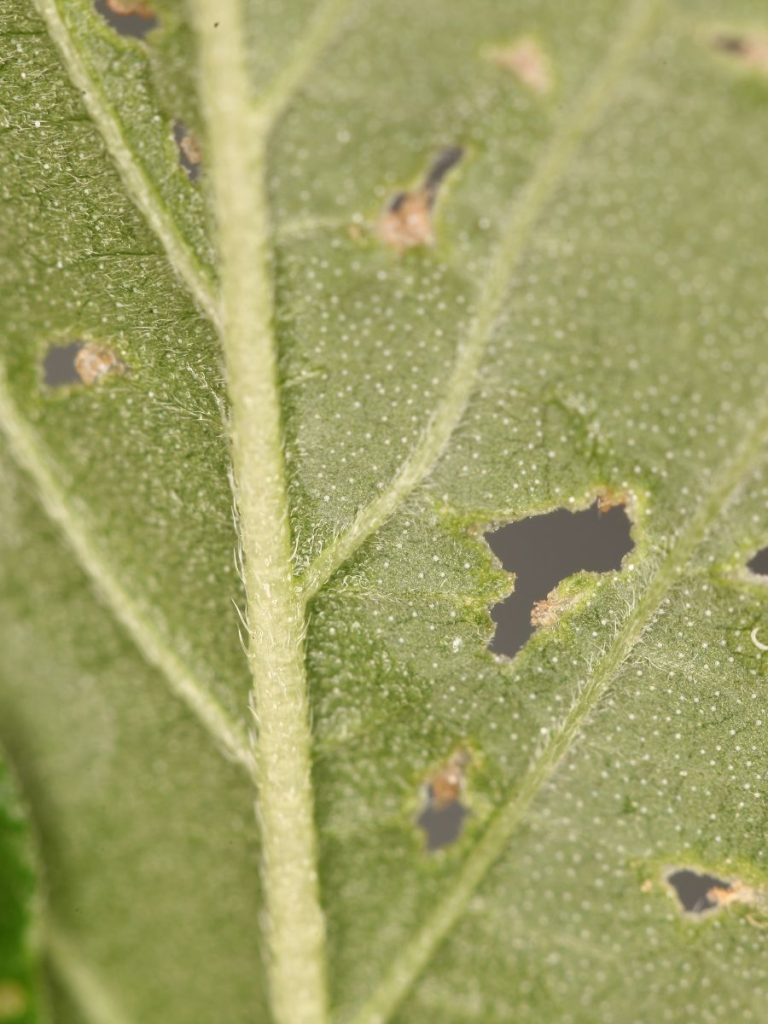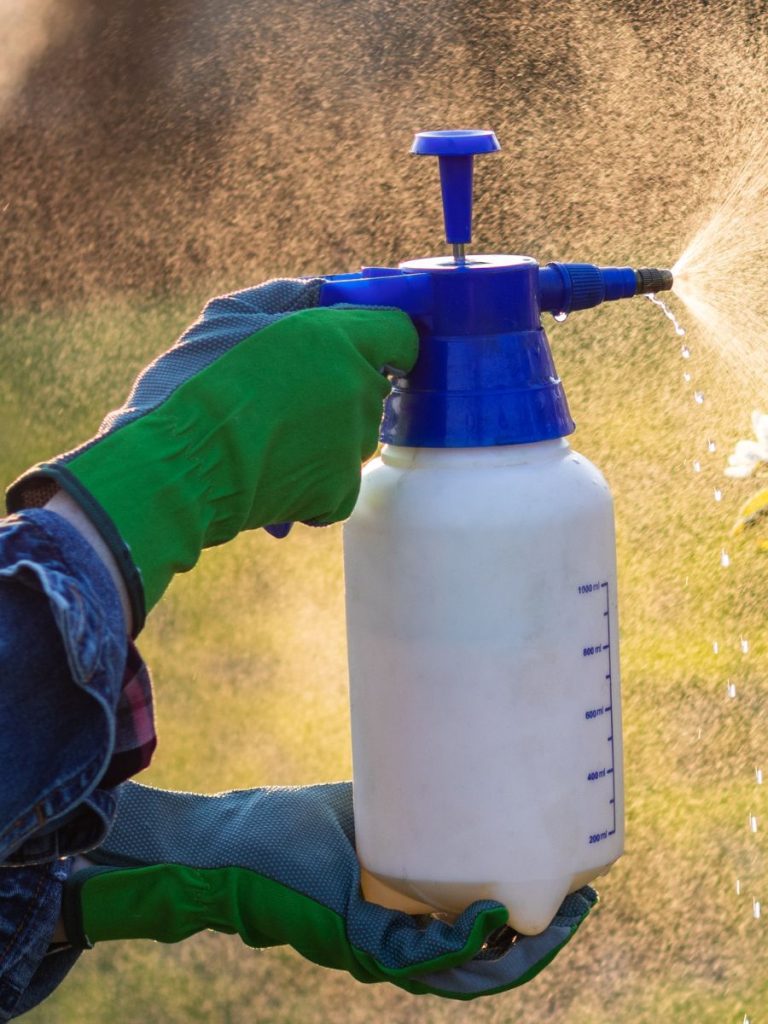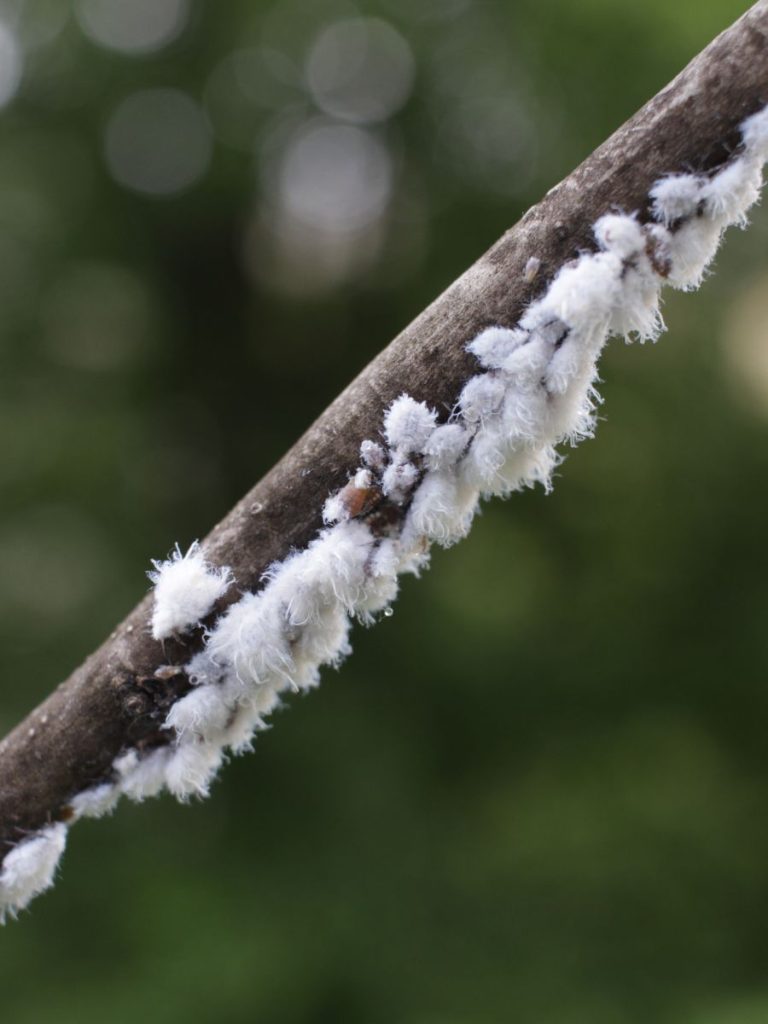Japanese Maple bugs often make their presence known during the warmer seasons, which might make it a bit of a nuisance.

A Japanese maple tree is a stunning addition to any landscape, with its vibrant colors and elegant frilly leaves.
You're reading: Japanese Maple Bugs & How to Keep It Pest-Free
Unfortunately, Japanese beetles, aphids, mites, and scale are also fond of this beautiful tree as much as we do.
But no worries, we’ve got your back! Check out these tips to keep these pesky critters away and let your maple’s beauty shine for years.
Oh, and stick around till the end – I’ve got a little poem to share. Hope it brings a smile to your face!
Japanese Beetles: Leaf-Feeding Nuisances

These pests love the taste of Japanese maple leaves, particularly the frilly red ones.
You can identify adult Japanese beetles by their shiny metallic-green bodies and bronze wings.
These half-inch creatures have six tufts of white hair on each side.
They gather in groups on sunny days, leaving nothing but skeletal veins behind after feasting on the leaves.
The larvae, or grubs, have a brown head and grayish-black rear end.
Shaped like the letter ‘C,’ they are 1-inch long and have hair on the last body segment that forms a ‘V’ shape.
The pupae start out cream-colored and become reddish-brown as they age.
How To Remove Japanese Beetles
Step 1: Hand-Picking
To bid farewell to these beetles, your best bet is the hands-on approach—literally.
Simply hand-pick them off your maple tree (or any other plant) and drop them into a bucket of soapy water.
This watery trap ensures they meet their end by drowning. Make it an early morning ritual before the sun hits, as that’s when these pests are most active.
Step 2: Organic Spray
Insecticidal soap or castor oil can be sprayed on the tree, while a soil treatment with natural bacteria, such as milky spore or Bacillus thuringiensis, will target the grubs and rid the soil of their presence.
Step 3: Repellent Plants
Planting some Japanese beetle repellent plants, like catnip, smartweed, morning glory, or mallow, near the tree can also help deter these pests.
Prevention: Netting
During the most active summer months, you can place netting over your tree to prevent an infestation.
Aphids: Sap-Sucking Troublemakers

Aphids are tiny, grain-of-rice-sized pests that congregate on the underside of leaves and along tender new stem growth.
They suck the sap out of the tree, leaving behind disfigured leaves and stunted branch growth.
Keep an eye out for ant activity as well since ants often ‘farm’ aphids for their honeydew secretion.
Read more : Purple Flowers Climbing Plant: 14 Gorgeous Species To Transform Your Garden
How to remove aphids:
- Blast them off the Japanese maple tree with a water hose.
- Mix a few drops of liquid dish soap in a spray bottle filled with water and saturate the aphids.
- Neem oil is effective against aphids. Apply it as needed to the underside of leaves.

Mites: Sap-Sucking Culprits

Mites are tiny, round pests that can be red or black and have eight legs.
They infest Japanese maples in large numbers and suck the sap out of the leaves.
This results in stippled leaves that turn bronze, red, or yellow before falling off the tree.
How to remove mites:
- Blast them off with a water hose.
- Apply Neem oil every two weeks during the summer.
- Keep your tree well-watered and fed to help it stay healthy and better equipped to fend off mite infestations.

Scale: Stubborn Tree Invaders

Scale appears as small white circles on the tree limbs, trunk, and foliage.
These pests resemble fish scales and can quickly cover the entire tree.
If left untreated, scale infestations can cause severe damage.
How to remove scale:
- Blast the tree with a water hose, let it dry, and apply Neem oil.
- Use tape traps to capture scale.
- Apply ant killer around the tree. Ants and scale have a symbiotic relationship, and eliminating ants will help control scale infestations.
- Wipe clean with a soapy or 70% isopropyl alcohol. Use toothbrush or cotton swaps.

My poem on the beauty of Japanese Maple
In the quiet corners of the night, where the moon gently weaves its silvery threads, I find solace beneath the branches of a beloved companion – the Japanese Maple.
As an Asian, my roots intertwine with a rich tapestry of tradition and morality, and it is in the delicate dance of the leaves and the ancient whispers of this tree that I discover a profound connection to nature’s ethereal wonders.
In the realm of the Japanese Maple, where hues of crimson, gold, and jade harmonize in a celestial ballet, I feel a tender embrace that transcends the physical.

My poem:
Beneath the moonlit sky so deep,
Where dreams and whispers softly seep,
In the garden, a tale to unfurl,
Of the Japanese Maple, a mystical swirl.
Leaves of crimson, gold, and jade,
In the moon’s embrace, they cascade.
A dance of hues, a vibrant spell,
In the realm where ancient stories dwell.
Read more : Sunburn Orchid Leaves: 5 Steps To Remedy Your Plant From The Sun
Beneath its branches, a sacred trance,
Where spirits waltz in a secret dance.
A Baku’s gaze, with eyes profound,
Through the leaves, their dreams are found.
In whispers carried by the night,
The Japanese Maple tells its plight.
Of whispered wishes and echoes old,
In a language only the shadows hold.
Roots that weave through tales untold,
In the heart of earth, a secret to hold.
A mystic pact with the lunar beam,
In the garden where dreams and nature twine.
As moonbeams kiss each leaf so tender,
The abstract realm, a place to wander.
In the garden where wishes gleam,
The Japanese Maple, a poet’s dream.
This poem is a testament to my reverence for this majestic tree, a symbol of beauty and grace that mirrors the virtues I hold dear.
As the moonbeams illuminate each leaf, I am reminded of the timeless values embedded in the very fabric of my cultural identity.
Final Thoughts

I hope you not only find joy in my poem but also glean some valuable insights from the article.
With the tips shared here, you’re on track to keep your Japanese maple tree thriving, free from pests, and ready to grace your surroundings with its beauty for years to come.
Cheers to a healthy and vibrant maple journey!
Source: https://thelittle.garden
Category: Gardening

